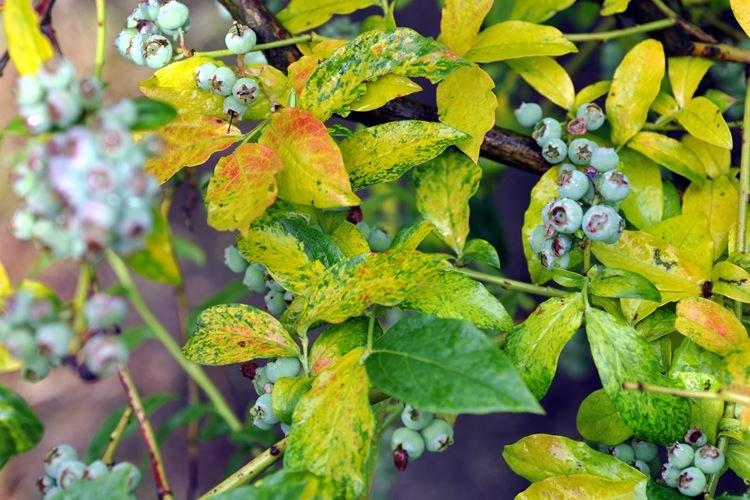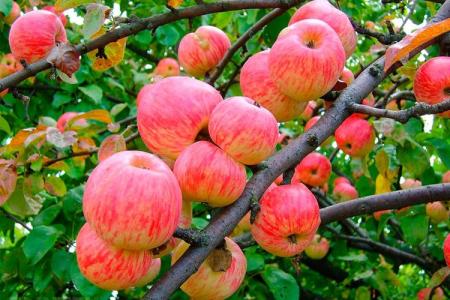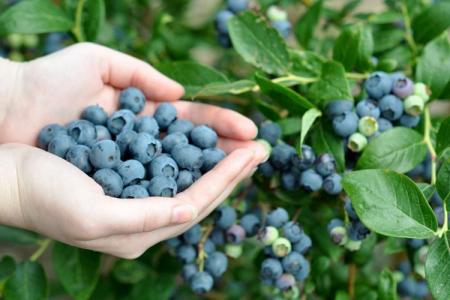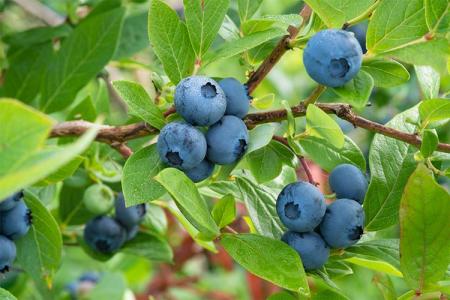
Among the stable and fast-growing blueberry varieties, Bluecrop is especially appreciated by hobbyists and farmers. For a long time and deservedly, it has become a reference, and on an industrial scale, whole hectares of land are planted with it. Bluecrop is not a hassle for planting and further care, so it is great for beginners. And we have already prepared a description for you and its main features!
Description and characteristics of the variety
The hybrid was developed by American breeders in the early thirties. After a long planting of experimental seeds and careful selection, it was possible to obtain the ideal bushes with the desired characteristics. But it took almost twenty years to prepare and bring to mind, so that Bluecrop blueberries went on sale only in 1952.
Bluecrop is a tall variety with spreading bushes up to 1.9 m covered with dark elongated leaves. Large berries up to 2.2 cm are slightly flattened and grow in heavy clusters. They have a mild sweet taste that may even seem too mundane. And if the shrub is not thinned out in time, acidity and astringency appear.
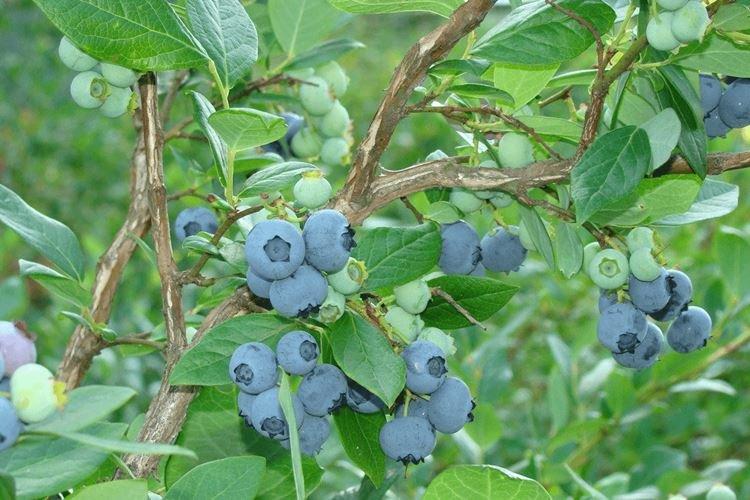
Bluecrop berries do not crumple during transportation, are well stored and are suitable for freezing. They will not suffer at all during automated harvesting due to their dense pulp and skin. The yield of one bush ranges from 4 to 9 kg, depending on age and conditions.
Blueberries make wonderful hedges from blueberries, because they are very decorative. In autumn, the bush turns red, and even the shoots turn brown - this continues until winter. And since May, it is covered with small whitish bell flowers with fancifully curved petals.
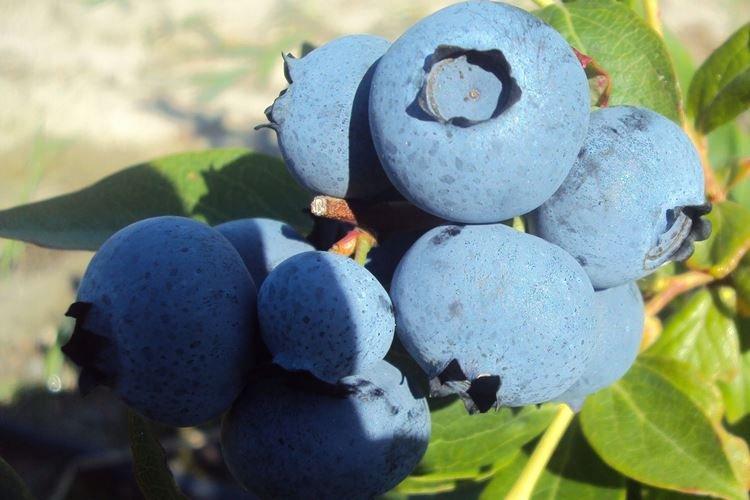
Blueberry care Bluecrop
Experts recommend that beginners grow Bluecrop because it is very difficult to miscalculate here. She almost does not get sick and is not afraid of pests, tolerates light cold snaps and droughts, does not cause trouble.
Temperature
The ideal harvest of blueberries Bluecrop gives at a temperature of about +25 degrees. This is a winter-hardy variety that does not freeze down to -40 degrees, but in cold regions it is better to insulate it for the winter. In spring, the ovaries do not suffer from sudden cold snaps down to -7 degrees, which guarantees a stable and predictable yield.

Lighting
Blueberries prefer sunny elevations, and Bluecrop is no exception. So the fruits will be larger and sweeter, and the shrub will grow faster. But this particular variety is easily adaptable to partial shading.
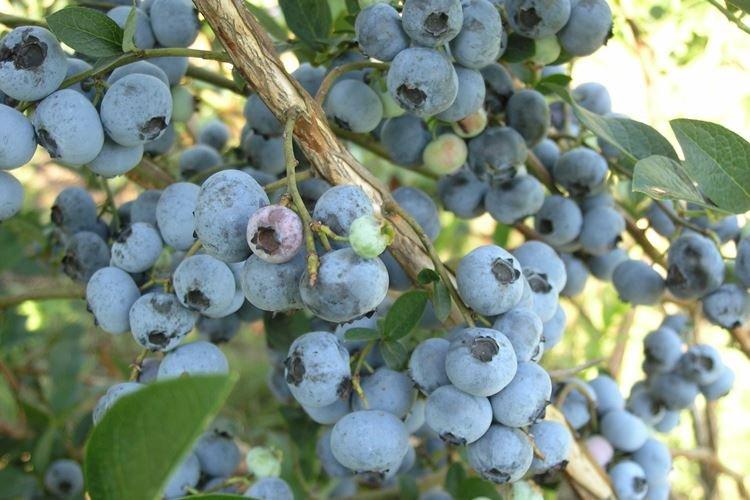
Watering
Blueberries Bluecrop prefers abundant and regular watering, but does not tolerate swampy areas and too humid climates. In this case, it is almost impossible to avoid fungal infections. In summer, the bushes are watered every 2-3 days, but take into account the weather conditions. A sure sign of a lack of water is shriveled small berries.
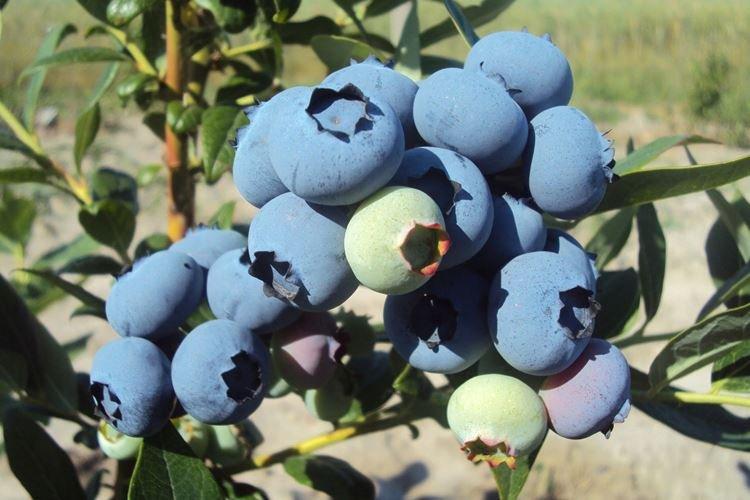
The soil
Blueberry less than other blueberry varieties suffers from improper soil, the main thing is good drainage. The variety is resistant to chlorosis and wilting caused by inappropriate conditions. But all the same, the acidity of the soil is the most important criterion, and for Bluecrop it should be about 4.5.
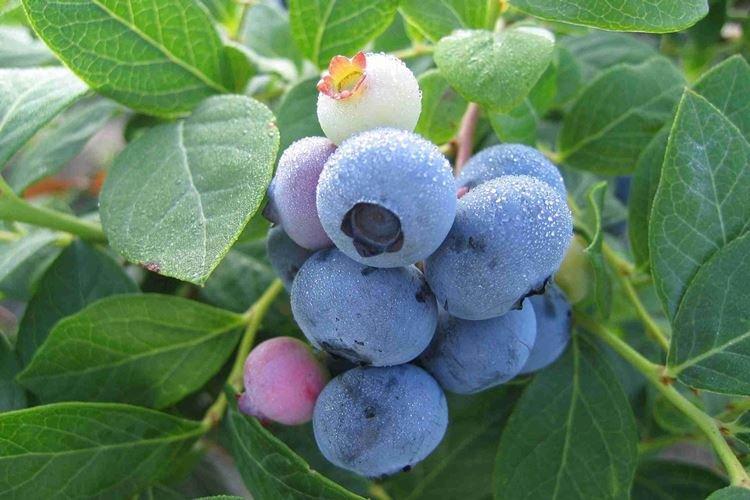
Top dressing
Blueberries definitely need generous nitrogen fertilization to build up green mass and develop a vigorous shrub. But they need to be stopped by the second half of summer, so that Bluecrop has time to prepare for winter. For the rest, it is enough to use complex fertilizers in the spring.

Reproduction
At home, Bluecrop is propagated by cuttings from young twigs. Be sure to treat the cut with stimulants, because they take root badly and for a long time. It is best to use a greenhouse with a stable temperature and light.
You can propagate the bush by layering of young shoots dug into the ground. First, you need to remove all the leaves from this place, make a small incision on the bark and treat with antiseptics.This method is faster, because under favorable conditions the seedling can be detached within a month.
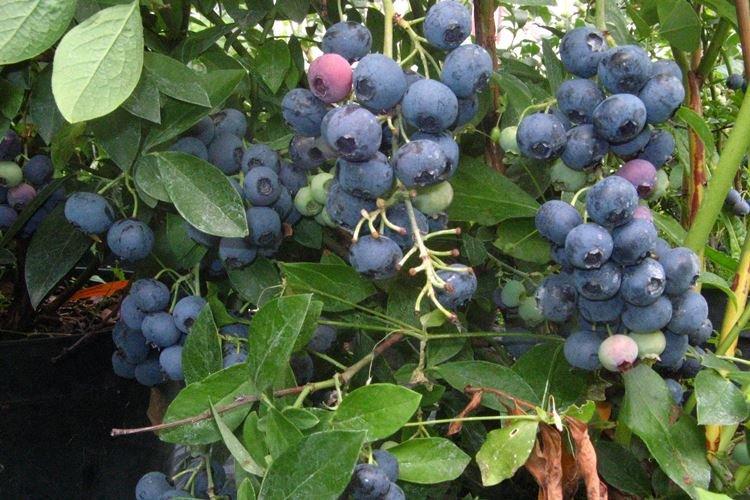
Pollination
Blueberry Bluecrop is self-pollinated, but with other varieties, the yield will be better. With cross-pollination, more ovaries are formed, and they become stronger. By the way, Bluecrop is an excellent honey variety that attracts bees to the garden.

Pruning
From the second year, Bluecrop blueberries must be pruned and thinned out. If the bush branches heavily, the shoots simply will not withstand the load and will break during the ripening of the crop. In addition, it increases the risk of developing various diseases. The height of the bush should be within 2 m, and the width should be within 1.7 m.

Harvesting
Bluecrop berries ripen for a long time, and this is very convenient for amateur gardeners, because you can feast on the fresh harvest from the bush all the time. But on an industrial scale, this is not so good, because it will complicate the assembly process. The crop is harvested from late July to mid-August, 55 days after the start of flowering.
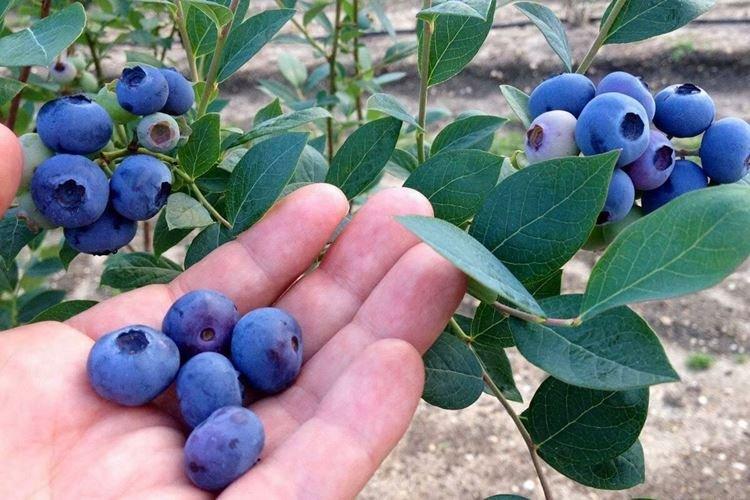
Wintering
In the harsh northern regions, even winter-hardy blueberry varieties are best insulated for the winter. The principle is the same as with vineyards and other berries: you need to slightly bend the branches and wrap them with agrotextile, spruce branches or corn.

Planting blueberries Bluecrop
It is more convenient to plant Bluecrop blueberries right away in containers - this way you will not damage the root system. Bushes grow healthier and yield more abundant crops. One- and two-year-old seedlings are suitable for planting.
Dig a hole 50x50x50 cm or a whole trench for several bushes. Immediately form a peat substrate with coniferous sawdust, add humus and 30 g of nitroammophoska. For soil with a close occurrence of groundwater, Bluecrop blueberries are planted on the ridge, and then dripped and mulched above the soil level.
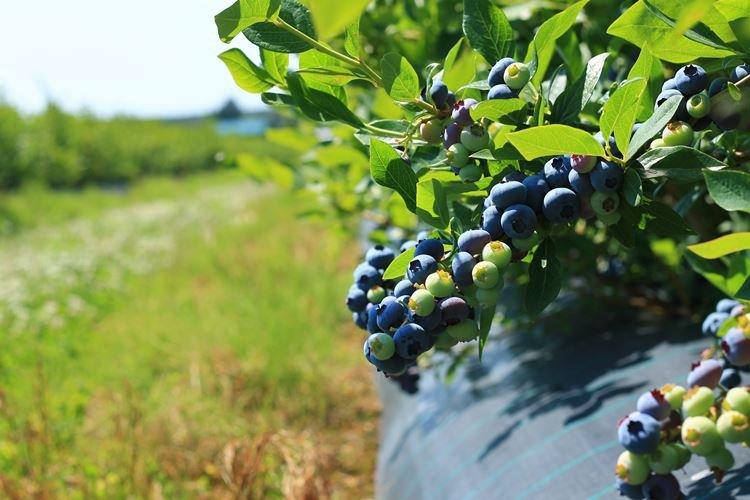
Diseases and pests of Bluecrop
Modern Bluecrop is very resistant to diseases and pests. But do not forget to treat the bushes in time with insecticides and fungicides. Remember that blueberries have a sensitive shallow root system so they should not be exposed to concentrated pesticides.
The most common diseases are of fungal origin. These are mummification of berries, coccomycosis, gray rot, anthracnose, other mycoses and sporoses. For prevention, remove the carrion and damaged branches in time, thin out the bush, monitor the humidity and periodically renew the mulch.
